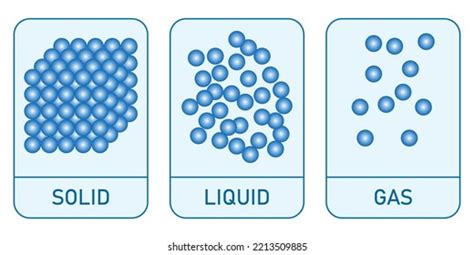Is Mg A Solid Liquid Or Gas
listenit
Mar 28, 2025 · 4 min read

Table of Contents
Is Mg a Solid, Liquid, or Gas? Understanding Magnesium's Physical Properties
Magnesium (Mg), element number 12 on the periodic table, is a fascinating element with a wide range of applications. But a fundamental question often arises: is magnesium a solid, liquid, or gas? The answer, as with many things in science, is nuanced and depends on the conditions. This comprehensive guide will delve into the physical properties of magnesium, explaining its state of matter under various circumstances and exploring its unique characteristics.
Magnesium at Standard Temperature and Pressure: A Solid State
Under standard temperature and pressure (STP), defined as 0°C (273.15 K) and 1 atmosphere (atm) of pressure, magnesium is a solid. This is the state in which it's most commonly encountered and utilized. Its solid form exhibits several key properties:
Key Properties of Solid Magnesium:
-
Silvery-white Appearance: Magnesium possesses a characteristic bright silvery-white metallic luster. This shiny appearance is due to its electron configuration and how it interacts with light.
-
Lightweight: Compared to many other metals, magnesium is remarkably lightweight. Its low density makes it ideal for applications where weight reduction is crucial, such as in aerospace and automotive industries.
-
Relatively High Strength: While not as strong as steel, magnesium alloys exhibit surprising strength-to-weight ratios, making them competitive in various structural applications.
-
Good Electrical Conductivity: Magnesium is a relatively good conductor of electricity, a property stemming from its metallic bonding and the ease with which electrons can move throughout its structure.
-
Good Thermal Conductivity: Similarly, magnesium efficiently conducts heat, making it useful in applications requiring effective heat dissipation.
Magnesium's Phase Transitions: From Solid to Liquid and Beyond
While solid at STP, magnesium undergoes phase transitions to liquid and gaseous states at higher temperatures. Understanding these transitions is key to comprehending its behavior under different conditions.
The Melting Point: Solid to Liquid
Magnesium's melting point is 650°C (923 K). This means that when magnesium is heated above this temperature, it transitions from its solid state to a liquid state. This transition involves overcoming the interatomic forces holding the magnesium atoms in a rigid lattice structure, allowing them to move more freely.
The Boiling Point: Liquid to Gas
At an even higher temperature – its boiling point of 1090°C (1363 K) – magnesium transitions from liquid to gas. This involves overcoming the intermolecular forces holding the liquid magnesium atoms together, allowing them to escape into the gaseous phase as individual atoms or small clusters of atoms.
Understanding Phase Diagrams
The relationship between temperature, pressure, and the state of matter (solid, liquid, gas) is best visualized using a phase diagram. A phase diagram for magnesium would show the boundaries between these phases under various conditions of temperature and pressure. While beyond the scope of a simple explanation, it's important to note that pressure can influence the melting and boiling points, albeit to a lesser extent compared to the influence of temperature.
Applications of Magnesium in its Various States
Magnesium's unique properties in its solid state make it indispensable in numerous applications:
Solid Magnesium Applications:
-
Automotive Industry: Magnesium alloys are increasingly used in automotive parts due to their lightweight nature and strength, leading to improved fuel efficiency and reduced emissions.
-
Aerospace Industry: Similar to the automotive industry, the lightweight nature of magnesium is highly valued in aerospace applications, contributing to lighter aircraft and spacecraft.
-
Electronics: Magnesium's good electrical conductivity and lightweight nature make it suitable for electronic components and casings.
-
Biomedical Applications: Magnesium plays a crucial role in biological systems, and its biocompatibility makes it valuable in biomedical implants and devices.
-
Pyrotechnics: Magnesium's high reactivity with oxygen allows it to burn brightly, making it a key component in fireworks and flares.
While liquid and gaseous magnesium find fewer direct applications than the solid form, they are crucial in certain industrial processes:
Liquid and Gaseous Magnesium Applications (Indirect):
-
Magnesium Alloys Production: The liquid state is essential in the production of magnesium alloys, where magnesium is melted and mixed with other metals to achieve desired properties.
-
Chemical Reactions: Gaseous magnesium can be involved in certain specialized chemical reactions in controlled environments, though this is less common than its use in solid or liquid form.
Conclusion: Magnesium's Versatile Nature
In summary, magnesium exists as a solid under standard conditions. However, its ability to transition to liquid and gaseous states at higher temperatures opens up a range of possibilities in industrial processes and specialized applications. Understanding magnesium's physical properties, including its melting and boiling points, and its behavior under different temperature and pressure conditions is essential for its effective utilization in various sectors. This knowledge is crucial for scientists, engineers, and anyone interested in the versatile world of materials science. Further research continues to expand our understanding of magnesium and unlock its full potential in various cutting-edge technologies. The future of magnesium applications is bright, driven by ongoing innovation and a deeper understanding of its inherent properties.
Latest Posts
Latest Posts
-
Can You Determine The Activation Energy Of The Reverse Reaction
Mar 31, 2025
-
What Is 3 4 Of A Mile
Mar 31, 2025
-
Find The Limit Of A Sequence
Mar 31, 2025
-
How Many Atoms In One Mole
Mar 31, 2025
-
Mass Of An Electron In Grams
Mar 31, 2025
Related Post
Thank you for visiting our website which covers about Is Mg A Solid Liquid Or Gas . We hope the information provided has been useful to you. Feel free to contact us if you have any questions or need further assistance. See you next time and don't miss to bookmark.
